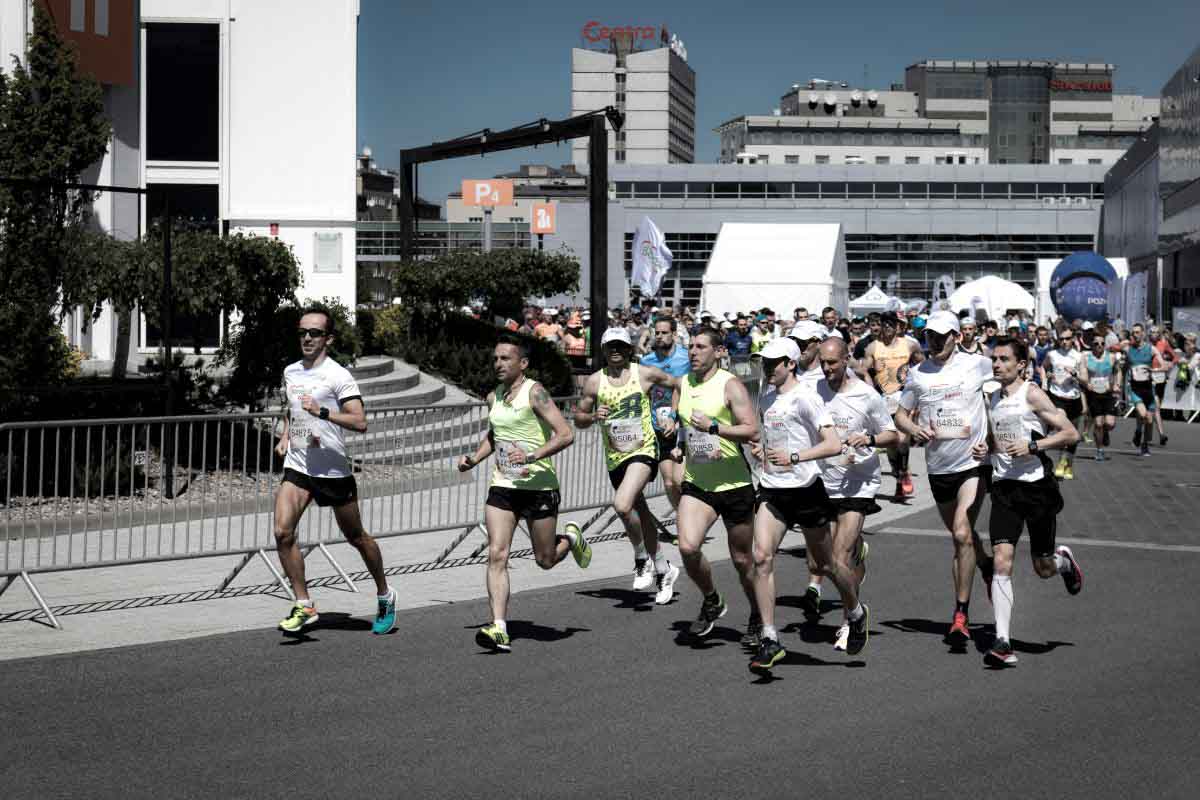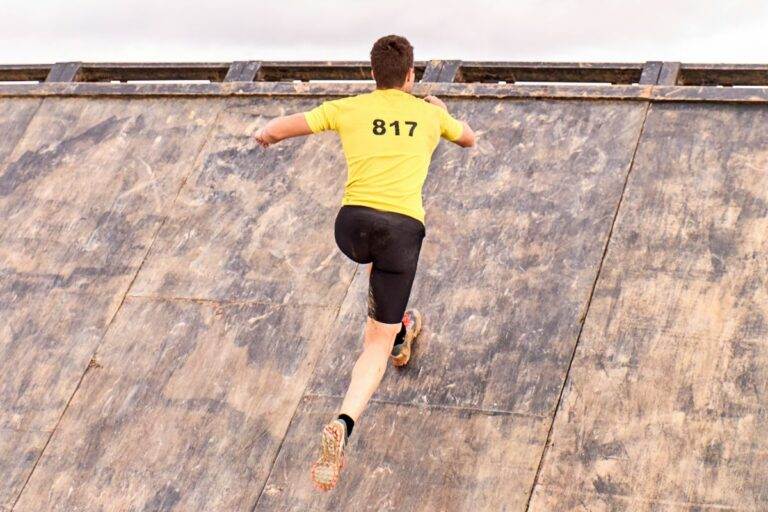How Long Is a Marathon? Why Exactly 26 Miles, 385 Yards?

Time for a history lesson today, as we explore the reason why the marathon is exactly 26 miles, and 385 yards.
One of the biggest MILESTONES in a runner’s career is being able to run a marathon.
- Distance of a marathon in miles: 26,2188 miles (26 miles, 385 yards)
- Distance of a marathon in kilometers: 42,195 km (42 km, 195 meters)
For comparison: An entire loop around Central Park, New York, is about 6.1 miles. So circling 4 rounds gets you close to a marathon’s length (but you are still almost 2 miles short).
Many of the most famous cities in the world will host this ICONIC event, including Boston, New York, and Chicago.
But why is the marathon 26.2 miles, and not a nice round 25 miles?
To answer this question we need to head back all the way to ancient Greece, whilst exploring the Olympics and even the British Royal Family.
The Battle Of Marathon
To learn of the inception of the marathon, we first need to head back to ancient Greece.
According to Herodotus, an Athenian called Pheidippides was given the mission to run from Athens to Sparta, in order to seek help before an infamous battle with the Persian army was to take place. It is noted that he ran over 225 km, which is around 140 miles.
However other sources suggest that this Greek Messenger simply raced from the site where the battle was located, Marathon, to Athens which was around 25 miles away.
After the messenger had made the announcement to the Athenians back at home, he subsequently collapsed and died.
First Modern Olympics
The marathon was invented in modern times despite being inspired by ancient Greek tales.
Athens was the choice of the very first modern summer games in 1986. It was suggested the marathon be held there in honor of the legend.
To honor this heroic run, the distance of the 1896 Olympic marathon in Athens was set to the same distance as Marathon to Athens (about 40 kilometers, or 25 miles).
On April 10th, 1896, runners gathered near the ancient battlefield located in Marathon, Greece to run from Marathon to Athens.
Spyridon Louis, a 23-years old former soldier from Greece, won the first modern Olympic marathon. He covered nearly 25 miles (40 km) in 2 hours, 58 minutes, and 50 seconds.
Marathon distances were not standardized in those early days, so the records were not officially acknowledged.
In comparison to the marathons you see today, the event itself was much different. For example, many of the runners stopped at the halfway points to eat an egg and drink a glass of wine!
Adjusting The Distance Of The Marathon
By the time of the 1904 Olympics in St. Louis, the distance of the marathon had just been set back to 24.8 miles.
However, the St. Louis marathon was controversial in other ways.
Competitors struggled due to dust being picked up by automobiles that were traveling along the roads. More than half of the runners did not complete the marathon.
An American called Fred Lorz finished first. But the cheering crowd was unaware that Lorz had traveled 10 miles in a car, subsequently meaning his disqualification!
An Accidental 26.2 Mileage in London
So how did the marathon end up at 26.2 miles?
The course was extended due to the Royal Family in the 1908 games in London.
The story goes that Royal Family had requested that the race started on the lawns of Windsor Castle. The finish was at the Olympic Stadium.
Can you guess how long this marathon was? if you said 26.2 miles, or 26 miles and 385 yards, you would be correct!
The Length Was Standardized in 1921
So in those early years, the length really VARIED depending on the venue (or the King’s wish).
But then the 26.2-mile distance from the 1908 London Olympics was selected as the standard (without any particular reason).
The marathon was officially standardized at 26.2 miles in 1921 by International Amateur Athletic Federation (IAAF).
An Official IAAF Marathon Distance
An official IAAF marathon course is 42.195 km. IAAF maintains the official distance only in the metric system (distance in miles is an approximation).
It is mandatory to mark the route in kilometers for events governed by IAAF rules. There is no mention of miles in the rules.
The IAAF can only recognize a world record at events that follow its regulations.
Competitors’ timings are typically published at the midway point, and 5 km splits for major events.
IAAF World Records for a Marathon
At the 2022 Berlin Marathon, Kenyan Eliud Kipchoge set an official world record for men of 2:01:09. With this run, he beat his own previous world record by 30 seconds.
The fastest time for women was set in the 2023 Berlin Marathon at a time of 2:11:53 by Tigist Assefa from Ethiopia (the previous record was set in the 2019 Chicago Marathon at a time of 2:14:04 by Brigid Kosgei from Kenya).
For comparison: the average time to run a marathon is around 4,5 hours when you look at the race timings of big marathons. And it takes 6-8 hours for an average person to walk a marathon.

Marathon Races
Annually, more than 1000 marathons are organized in the US alone.
The famous Boston Marathon is the world’s oldest annual marathon. It has been held every year since 1897. It was inspired by the success of the 1896 Olympic marathon in Athens.
When it started, a length of 24.5 miles (39.4 km) was used for the Boston Marathon.
26 miles 385 yards (42.195 km) became the course in 1924. That is by the standard set by the 1908 Summer Olympics and codified by the IAAF in 1921.
Other notable large marathons include Chicago, New York City, London, Berlin, and Tokyo.
The 2021 marathon in Chicago had about 35,000 participants. It’s hard to get into the Chicago Marathon as entry is limited. Many people try to get in through the lottery, but only a fraction are selected.
Around 45,000 runners complete the London Marathon each year. It’s not easy to get into the London Marathon either. The chances of getting in through the ballot are relatively low, but there are other ways to secure a place, such as through a charity or running club.
Marathon running is WIDESPREAD, and its popularity continues to GROW (despite the even more significant growth of fun runs and obstacle course races.)
Women are picking up more into marathons than men. North America is not growing as much as the rest of the world, but still, the growth is about 20 %.
How Long Is an Ultramarathon?
Ultramarathons are races longer than standard marathons (anything over 26.2 miles).
They are typically on rugged terrain, so running skill alone is not enough. You need strength, core, speed, endurance, and mental ability to get through.
Even a 50K (31 miles) ultramarathon requires considerable training. Other typical distances are 50 miles, 100K (62 miles), and 100 miles.
The Bottom Line
As one of the most iconic running events in the world, the marathon steeps itself in heroic history, but also not just the wants of a royal that wanted to watch the race from their garden!
No matter if the length should be 25 miles, runners, across the world now compete to run the 26.2 miles and tick off another grueling event on their running bucket list.
When was running invented? History of running dates way earlier than the history of a marathon. You can read more in our article The Fascinating History of Running: From Ancient Times to Modern-Day Sports.






